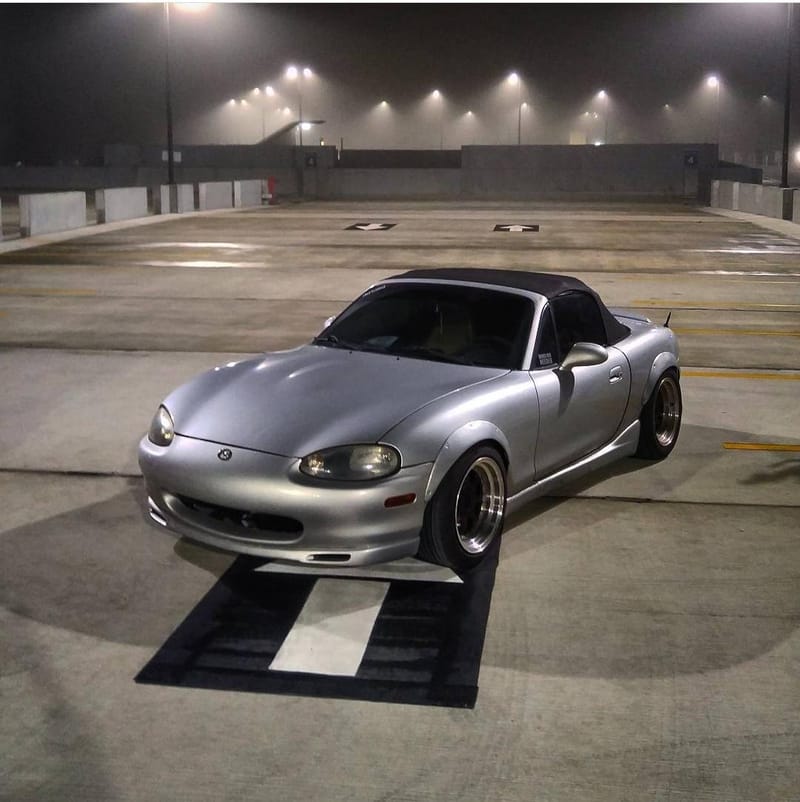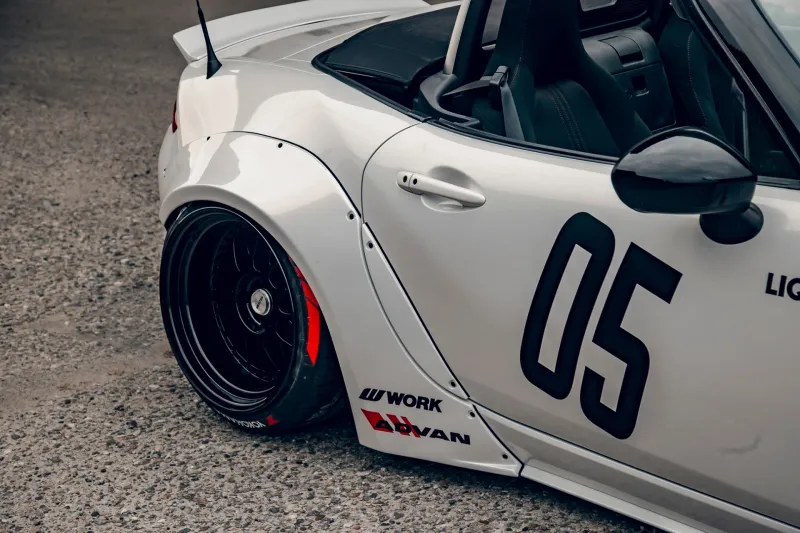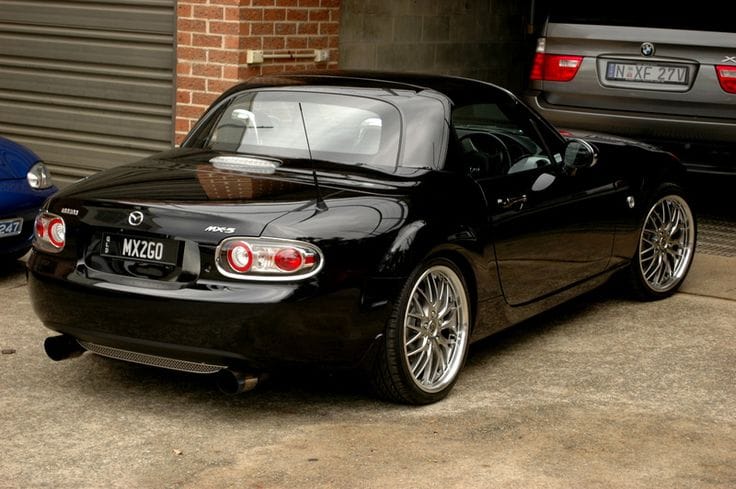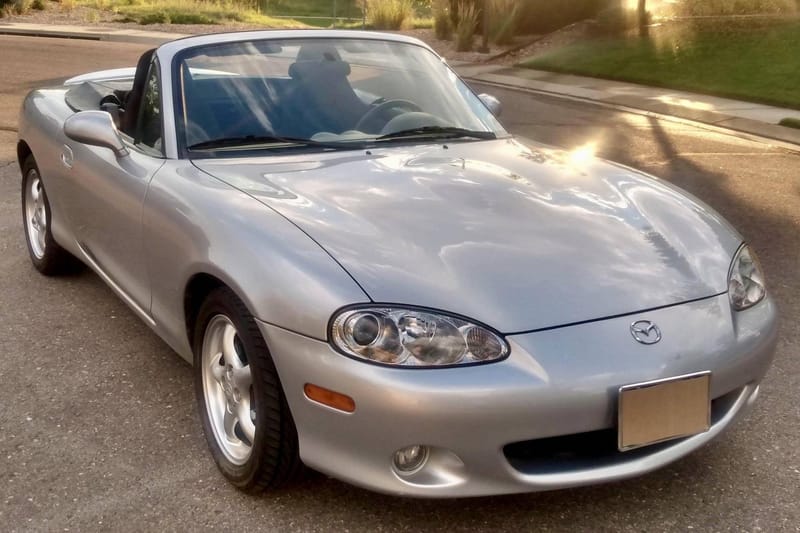When to Overhaul Your Miata's Suspension
A proper Miata suspension overhaul means bundling parts for maximum payoff. Swap shocks/struts with new bump stops, dust boots, and top mounts, refresh all control-arm bushings (or arms on NCs), plus sway-bar bushings, end links, and alignment hardware.
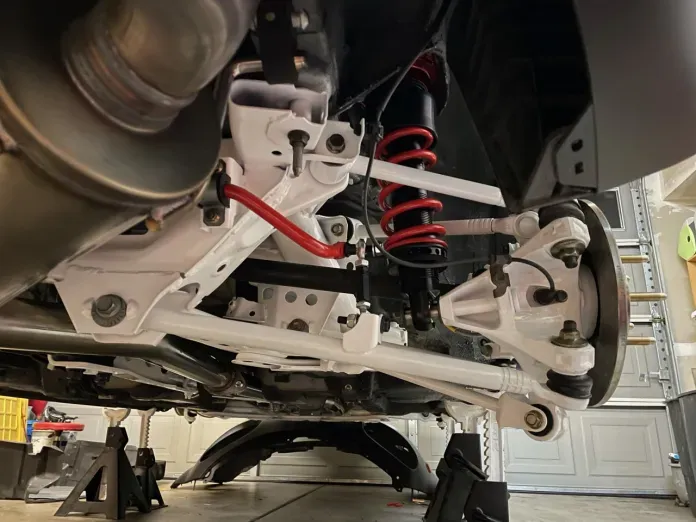
On most Miatas, a proper refresh bundles several parts so you only pay the labor once and get a bigger result. That means new shocks or struts with fresh bump stops and dust boots, new top mounts or “tophats,” a full set of control-arm bushings (or replacement arms on NCs where bushings and sleeves can be stubborn), sway-bar bushings and end links, plus fresh alignment hardware like eccentric bolts, cams, and washers. Worn rubber lets alignment wander and makes the car feel vague; replacing it tightens response and stability in a way you feel immediately.
The Quick Answer
Plan a suspension refresh when you notice any combo of these: persistent clunks or squeaks over small bumps, uneven tire wear or “cupping,” a floaty or bouncy ride after dips, the car won’t hold an alignment, visible oil leakage from the shocks, one corner sitting lower than the others, or seized alignment eccentrics that stop the shop from dialing in camber and toe. Street-driven dampers commonly fade somewhere around 50,000 to 100,000 miles even if they don’t look “blown,” so a lot of Miatas wake up with new shocks in that window.
Ride Height Tells You a Lot
Measure from the wheel center to the fender lip at all four corners on level ground. On NA and NB cars, common street setups live around the mid-13-inch range hub-to-fender with a slight rear rake, while stock ND ride height is taller. If one corner sits noticeably lower with the same tire size and pressures, suspect a collapsed top mount or a tired spring.

The Bounce Test, With Caveats
Pushing down on a corner and watching how quickly it settles can catch dead dampers, multiple oscillations means it’s time, but it’s crude. More reliable signs include oil weeping down the shock body, nose-dive under braking, cupped tread wear, and that “floaty” response on dips or freeway undulations.
Listen For Clunks and Squeaks
Clunks over driveway entries and speed bumps often point to sway-bar end links, sway-bar bushings, top mounts, or even spring coils touching after a recent install. Squeaks usually trace to dry or torn rubber. Take a close look at the boots on ball joints and tie rods; any tear invites contamination and accelerated wear.
NA/NB (1990–2005): Age Kills Rubber
These cars are now two to three decades old, so the rubber is the story. Control-arm bushings harden and crack, bump stops crumble, Miatas spend a surprising amount of time on them, and original NA upper mounts can collapse enough to drop a corner. Expect seized eccentric bolts that can turn a simple alignment into a hardware job. If the car feels harsh over tiny bumps on normal tires, check bump stops and dampers first. Typical triggers to overhaul include 60,000 to 100,000 miles on shocks or unknown history, visible oil on the damper bodies, persistent clunks from end links or mounts, and alignment that won’t hold. Torn ball-joint or tie-rod boots or any detectable play means it’s time to replace those parts as well.
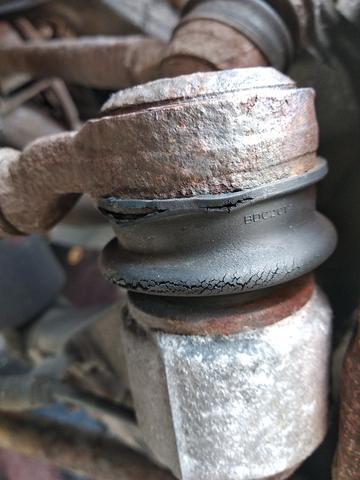
NC (2006–2015): Fasteners and Hubs
On NCs, the long bolts that pass through steel-sleeved bushings love to rust to the sleeve. Many owners end up cutting bolts or replacing full arms when doing bushings. If an NC clicks or clunks and the alignment hardware is original, budget extra time and parts. For track use, rear, and sometimes front, hub bearings become a consumable; heavy-duty or motorsport-grade options are common among hard users. Triggers to overhaul include seized camber or toe eccentrics during an alignment, unexplained clunks on take-off or over bumps that aren’t end links, and any play or roughness in the hubs.
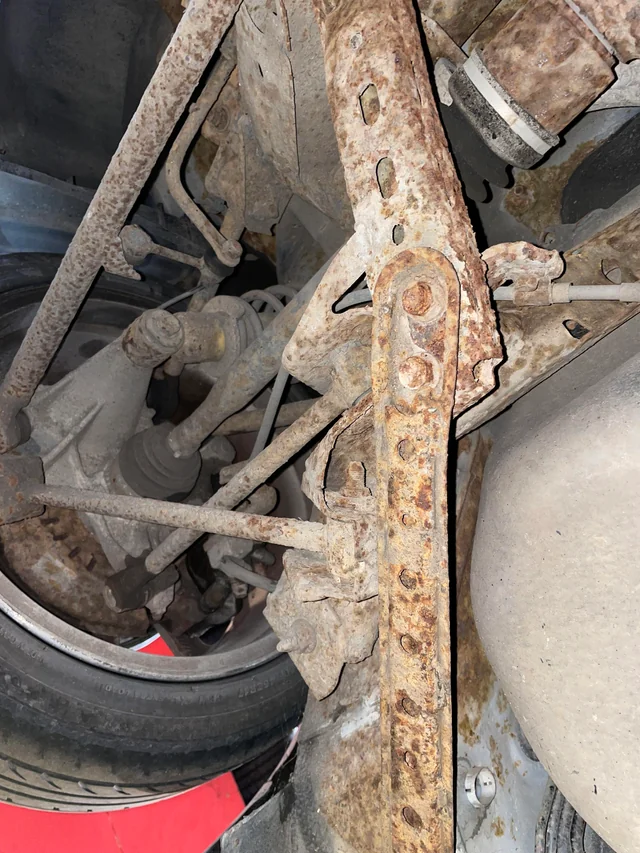
ND (2016–Present): Known Clunks, Easy Fixes
Early NDs developed a low-speed rear clunk from rear spring coils touching under compression; Mazda’s fix adds resin spring protectors to the coils. There’s also a bulletin addressing front coil spring or strut-bearing stick-slip noises, with a similar protector fix up front. Another bulletin targets water ingress through rear lateral-link bush boots on cars built before February 4, 2021, which can lead to rust and noise. If your ND clunks but otherwise feels tight, check these known issues by VIN before you start replacing half the car.

Rubber vs. Poly vs. Delrin
Fresh OEM-style rubber keeps noise, vibration, and harshness low and is perfect for street cars. Polyurethane cuts deflection for crisper steering but can add harshness and may squeak if installed dry or without proper sleeves and grease. Delrin or solid bushings are for track cars and need periodic attention. Pick based on your use case rather than hype, and remember that better geometry control usually trades some comfort.
Don’t Skip Bump Stops and Mounts
On Miatas, bump stops act like a secondary spring at the limits of travel. Short, crumbled, or missing stops make the car crashy and unpredictable, especially on lowered setups. Replace them with your shocks, and inspect or replace top mounts at the same time. On NAs in particular, the rubber-bonded upper mount can fail internally and make one corner sit low.
Mileage and Time Guidelines for Street Cars
Treat these as plan-ahead windows, because roads and driving style matter more than the odometer. Shocks and struts are commonly tired by about 50,000 to 100,000 miles; if the car has gone floaty or bouncy, don’t wait for a number to tell you. Bushings on NA and NB cars tend to age out even if mileage is low, so replace on condition when rubber is cracked or oil-soaked. On NC and ND, inspect and replace on condition as well, though many owners refresh around or after the 100,000-mile mark as alignment precision fades. Sway-bar bushings and end links are cheap, quick wins if you hear knocks over diagonal bumps. If you track an NC, check hubs regularly and consider upgrades if you feel roughness or see heat discoloration.
Overhaul Checklist You Can Hand a Shop
Plan on new alignment hardware, eccentric bolts, cams, and washers, and use anti-seize on reassembly. Expect to cut hardware on rusty NCs. Replace dampers, bump stops, dust boots, and mounts together to avoid repeating labor. Decide between new bushings or complete control arms, and always torque rubber-bushed pivots at ride height so you don’t preload them. If knocks persist over offset bumps, add sway-bar bushings and end links to the order. Track-driven NCs should have hubs inspected and upgraded as needed. Finish with a proper alignment at your target ride height and rake; Miata folks often speak in hub-to-fender numbers, which makes it easy to communicate setup and spot sag.
Pro Tips Before You Buy Parts
If your ND has a rear clunk, check whether it needs the coil-spring protector fix before you start buying parts. If your NA or NB rides harsh over tiny bumps, don’t immediately blame stiff springs, crumbled bump stops or tired shocks are frequent culprits. If you’re running Bilsteins or planning coilovers, know that many Bilstein monotubes are serviceable and revalvable by specialty shops, which is handy if you like your current setup but want it refreshed or retuned.
Refresh on condition and age, not just miles. On NA and NB cars, rubber and bump stops are the giveaway. On NC, budget for stubborn hardware and keep an eye on hubs if you track. On ND, rule out the well-known clunk fixes before you rebuild the whole rear. If you can’t hold an alignment, you see oil on shocks, or the car rides like a pogo stick, it’s overhaul time. If you want, I can spin this into generation-specific parts lists and alignment targets for street, canyon, or dual-purpose use.

